Nature never ceases to amaze us with a variety of different creatures and each of them is adapted to live and thrive in its unique environment. One of the most fascinating adaptations is extraordinarily large ears. One of the most fascinating adaptations is extraordinarily large ears. Big ears are quite cute and may look comical from a human point of view but for many animals they serve serious purposes such as amplifying sound, and cooling the body. This reveals the environment of the animal. That is why we are going to explore 7 animals that have the largest ears, where they live and how these oversized ears help them survive. Each animal on this list is remarkable in its own way, and the term “largest ears” may be considered in absolute size or relative to body size.
List of 7 Animals With the Largest Ears
1. African Elephant
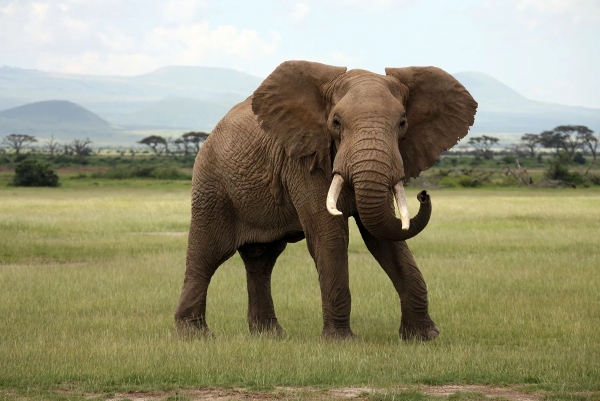
Source: Britannica
The African Elephant is well-known for its huge fan-like ears. According to Tsavo Trust, these ears can measure up to about 2 metres (approximately 6.6 feet) in length and around 1.2 metres (4 feet) wide. Though massive, those ears are only about 17% of the elephant’s body length in some cases. The reason for such large ears is primarily thermoregulation: African elephants live in hot savanna and open grassland environments where dissipating body heat is a major challenge. The ears are highly vascularised (i.e., full of blood vessels) and when the animal flaps them, warm blood flows through and heat is released into the air. These ears also help with hearing low-frequency sounds over long distances, and can be used for visual signalling (such as flaring the ears when threatened).
2. Fennec Fox
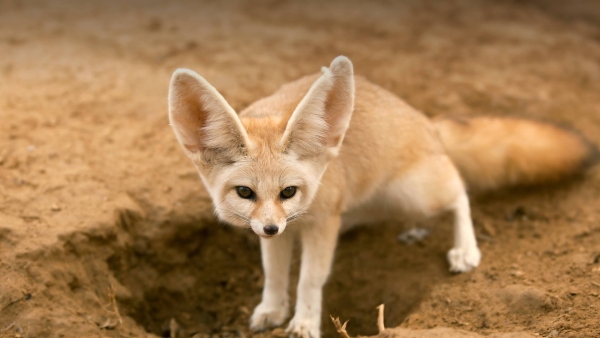
Source: San Diego Zoo Animals and Plants
The Fennec Fox is a small desert-dwelling canid native to North Africa, and despite its small body size it has impressively large ears — the largest ears relative to body size among canids. According to Racine Zoo its ears can reach lengths of about 6 inches in some cases, although precise standardized measurements vary. The large ears serve two main functions: first, to detect prey (often moving underground or beneath sand) in its desert habitat; second, to disperse excess body heat in the hot, arid environment. For such a small creature living in extreme heat with little water, having big ears is a smart survival tool.
3. Long-eared Jerboa

Source: Critterfacts
The Long-eared Jerboa is a tiny rodent found in the deserts of Mongolia and north-western China. Although its ears may not be as long in absolute terms compared to elephants, they are huge relative to its body size — its ears may be 1/3rd of its body length. Because of that proportion, it is considered to have the largest ears relative to body size of any animal. The enormous ears help it hear insect prey and the faintest sounds in its desert environment, and likely help manage heat in a habitat with strong temperature fluctuations between day and night.
4. Bat-eared Fox
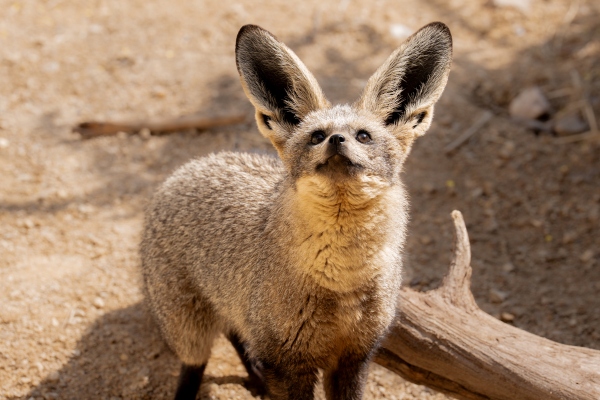
Source: Chester Zoo
The Bat-eared Fox inhabits savanna and semi-arid regions of Africa. Its most striking feature is its large ears, which measure about 11-13 cm in length. These oversized ears help with both thermoregulation and hunting: the fox feeds largely on harvester termites and other insects, and so the ears enable it to detect tiny rustlings or sounds underground. By being well-adapted to warm, open terrain, the big ears help release heat while the animal remains active when predators and prey are present.
5. Serval
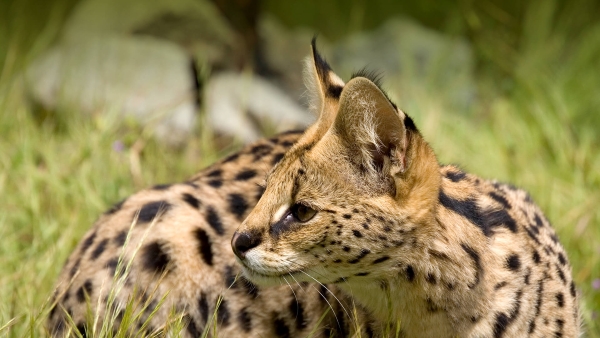
Source: San Diego Zoo Animals and Plants
The Serval is a medium-sized wild cat native to Africa, and while it may not hold the absolute record for ear length, it is remarkable for having the largest ears relative to body size of any wild cat. The ears are large and act like “radar dishes” enabling the serval to hear prey moving even underground in tall grass. Because its ears are so large in proportion to its head, the serval can detect rodents, birds and reptiles even under cover — a key survival advantage.
6. Black-tailed Jackrabbit
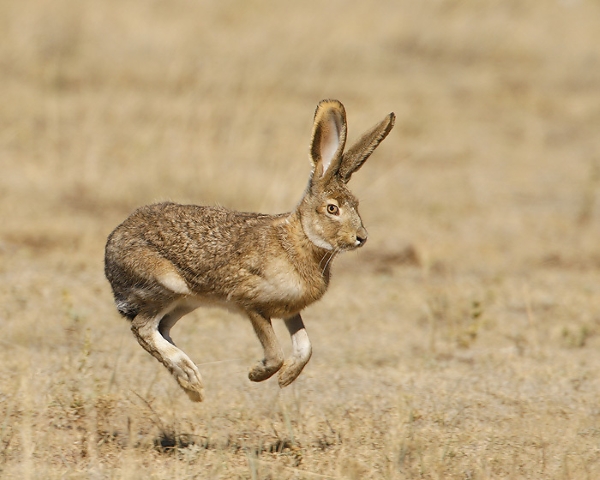
Source: iNaturalists
Jackrabbits (members of the hare family) are classic examples of large-eared animals adapted to open, arid habitats. The Black-tailed Jackrabbit has ears that can measure up to about 10 to 13 cm long according to Animal Diversity Web. The large ears serve as heat dissipators: when the animal moves into shade, blood vessels in the ear widen to route warm blood through the ears and thereby release heat into the cooler air — reducing the need to pant or sweat extensively. The ears also enhance its ability to detect predators approaching in open grasslands, giving the jackrabbit sharp survival tools in harsh terrain.
7. Red Kangaroo

Source: Active Wild
The Red Kangaroo is Australia’s iconic large marsupial adapted to the hot, open rangelands of the continent. Its ears may not be as extreme as some of the smaller desert species, but they are still sizable and perform multiple functions: each ear can rotate independently to catch sounds from different directions, helping detect predators or other kangaroos in wide-open space. The ears also assist in heat release in the arid environment.
In conclusion, from the colossal ears of the African Elephant to the cartoon-like proportions of the Long-eared Jerboa, ears serve as tools that are finely tuned by evolution to meet the demands of climate, terrain, prey and predator. Large ears may mean better hearing, better cooling, and better survival.
READ| Top 7 Animals that Lay the Largest Eggs
Comments
All Comments (0)
Join the conversation